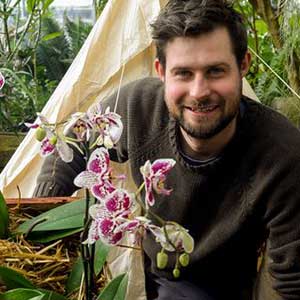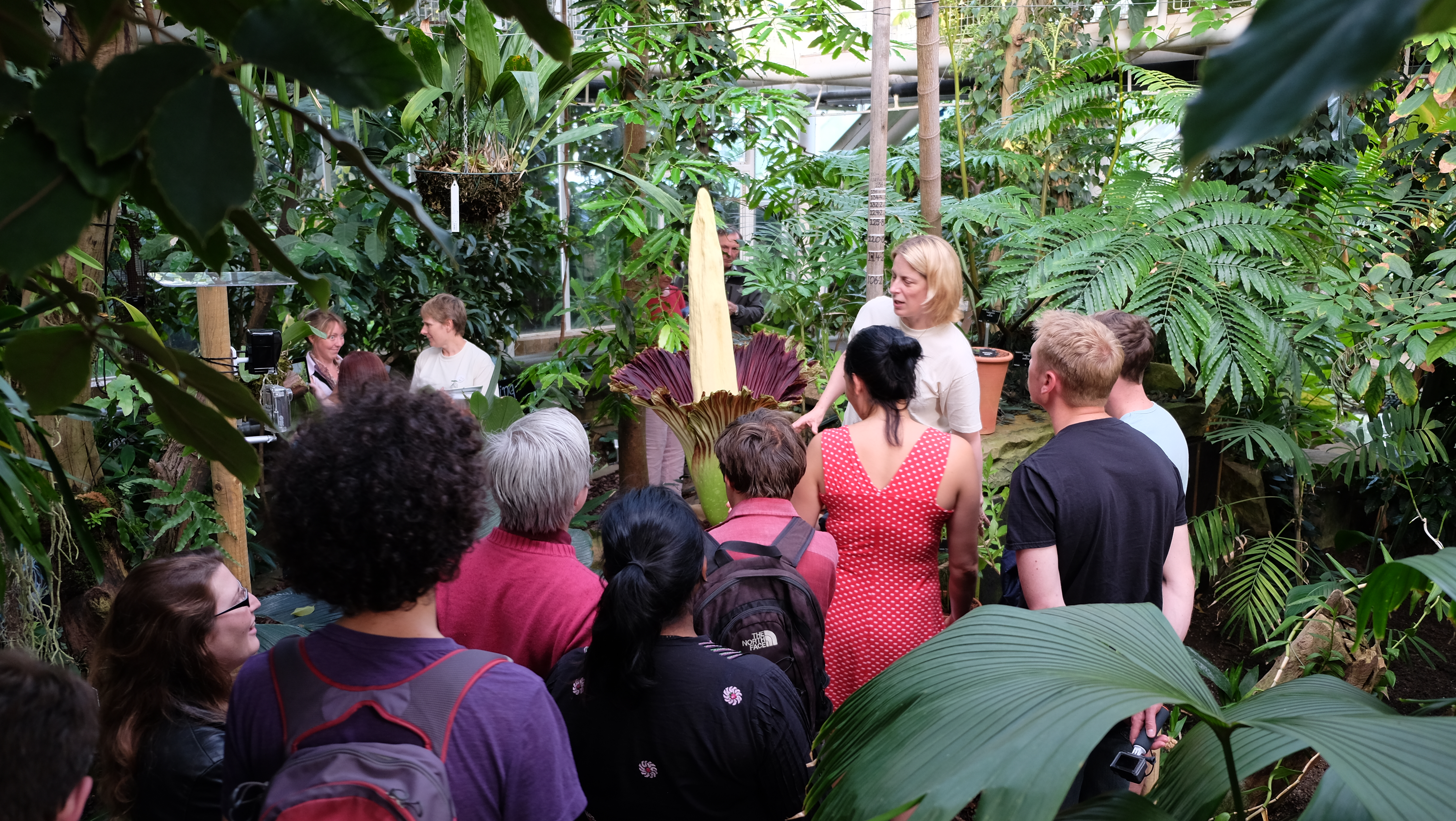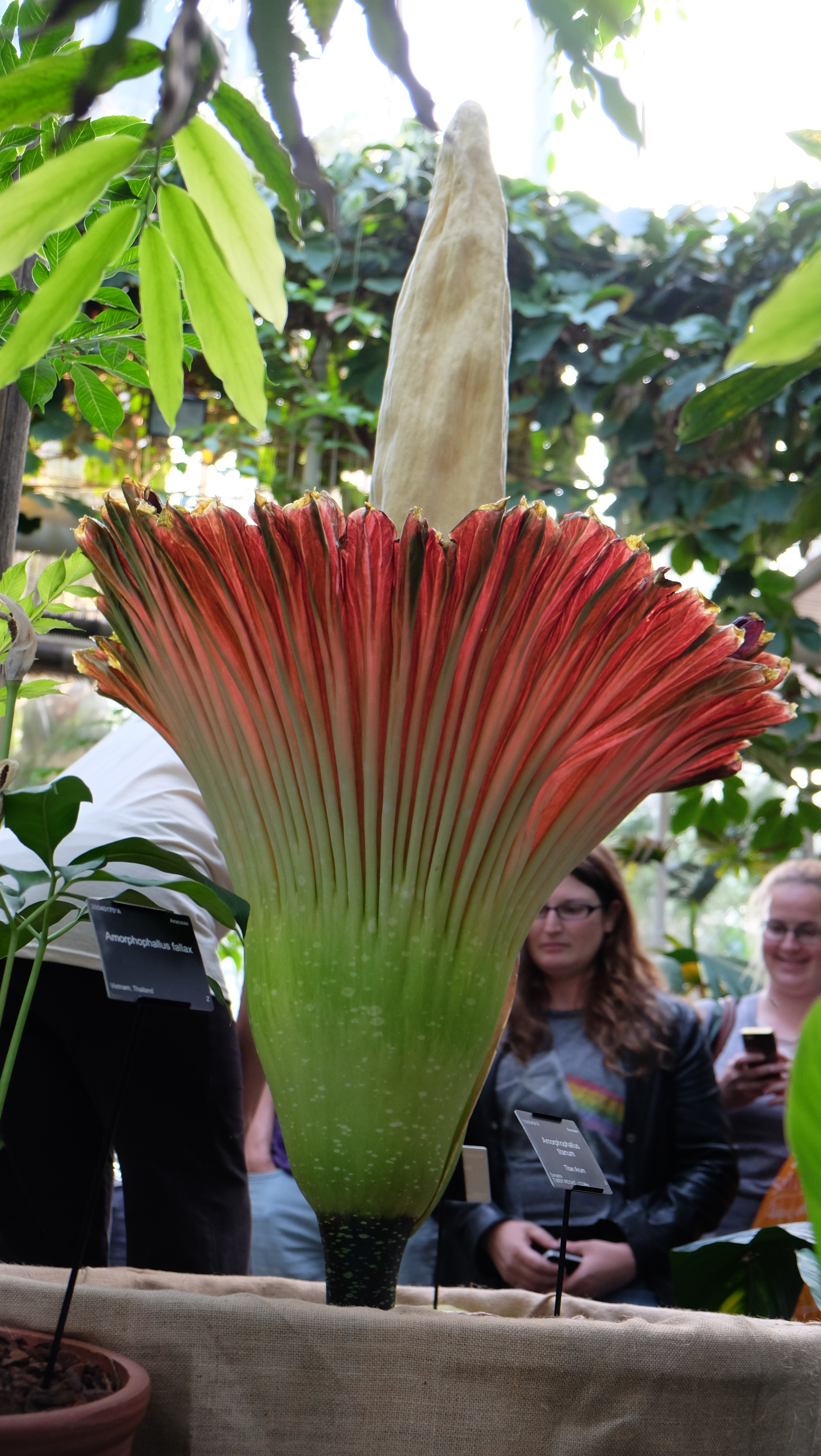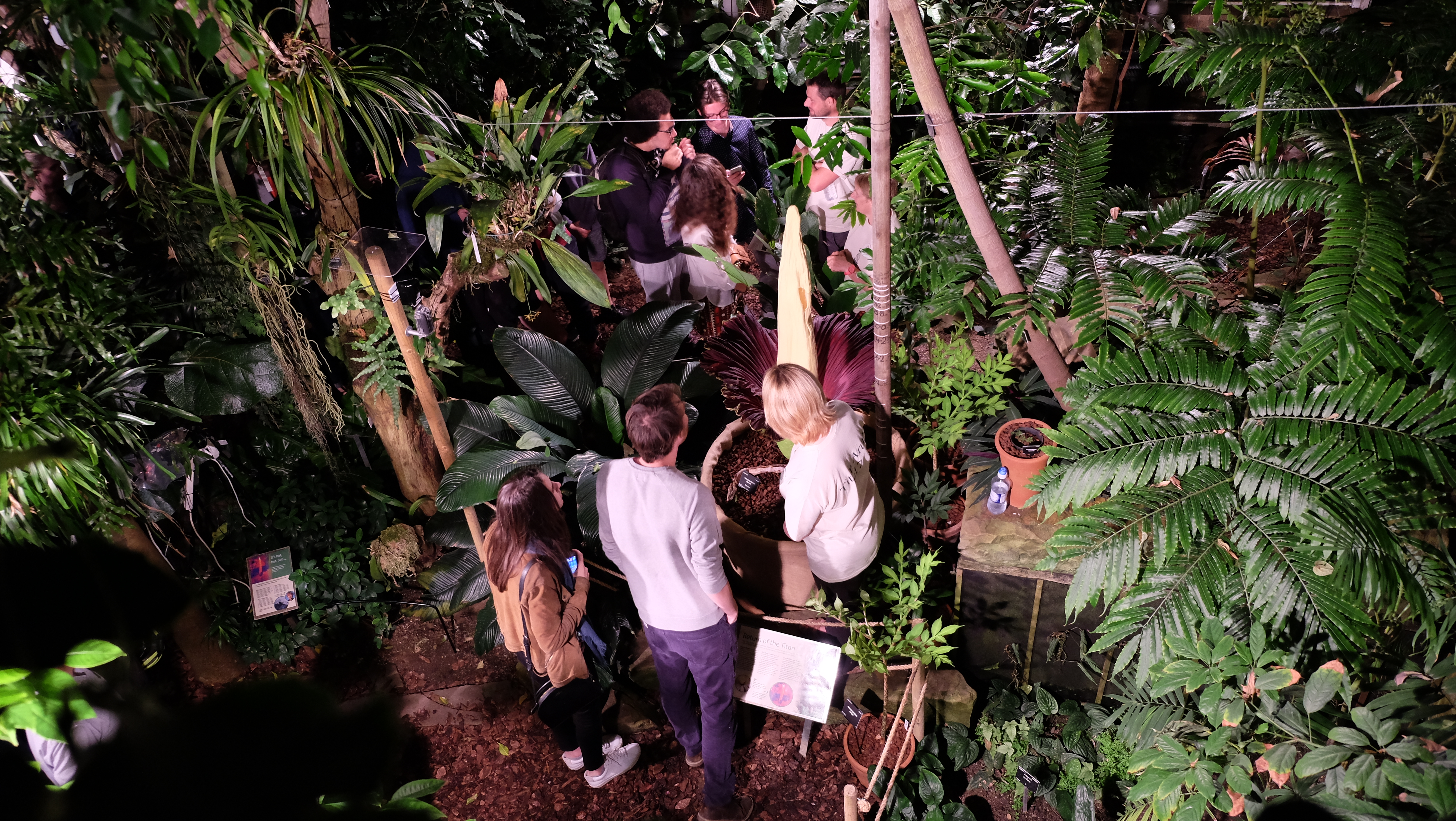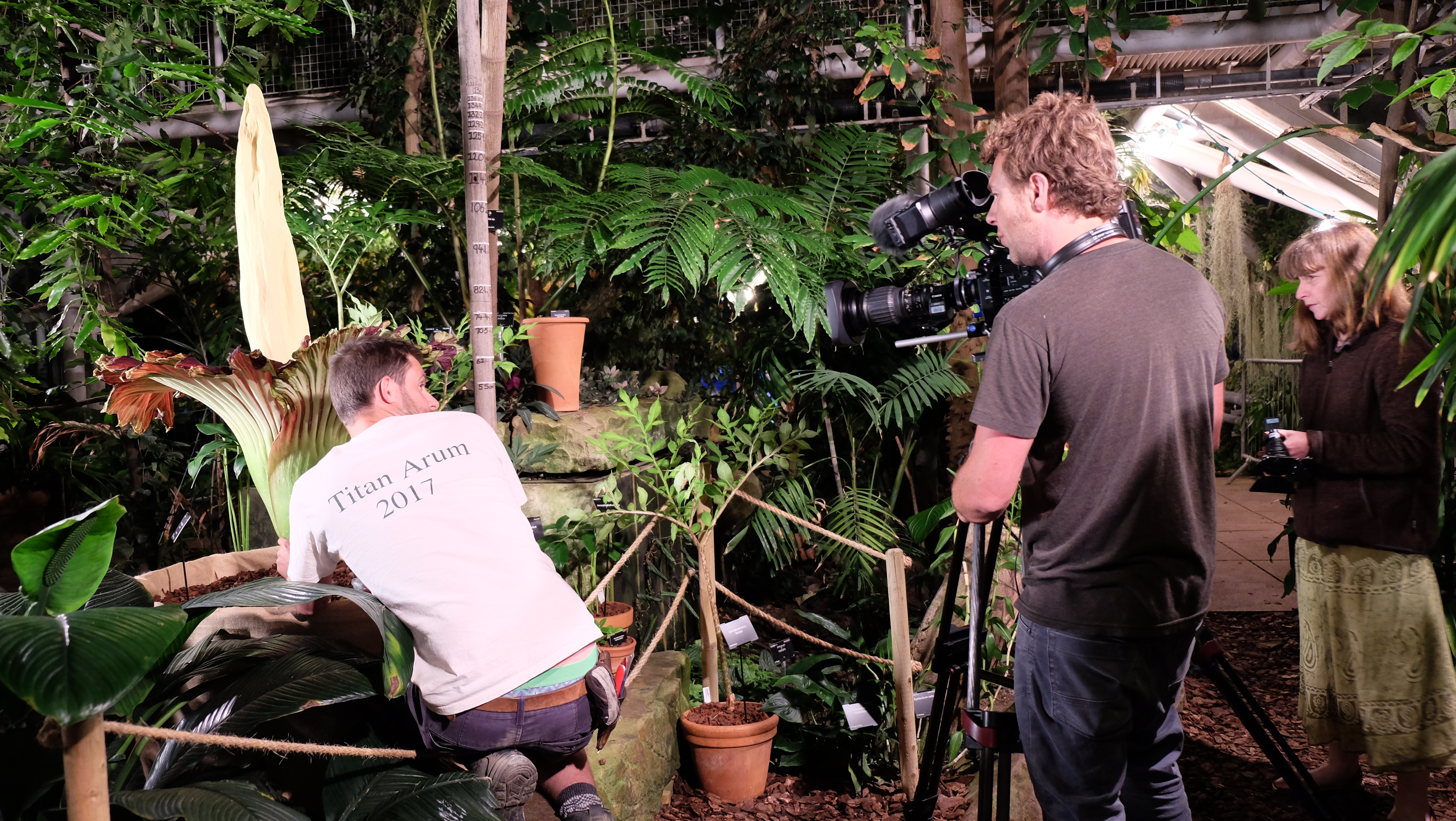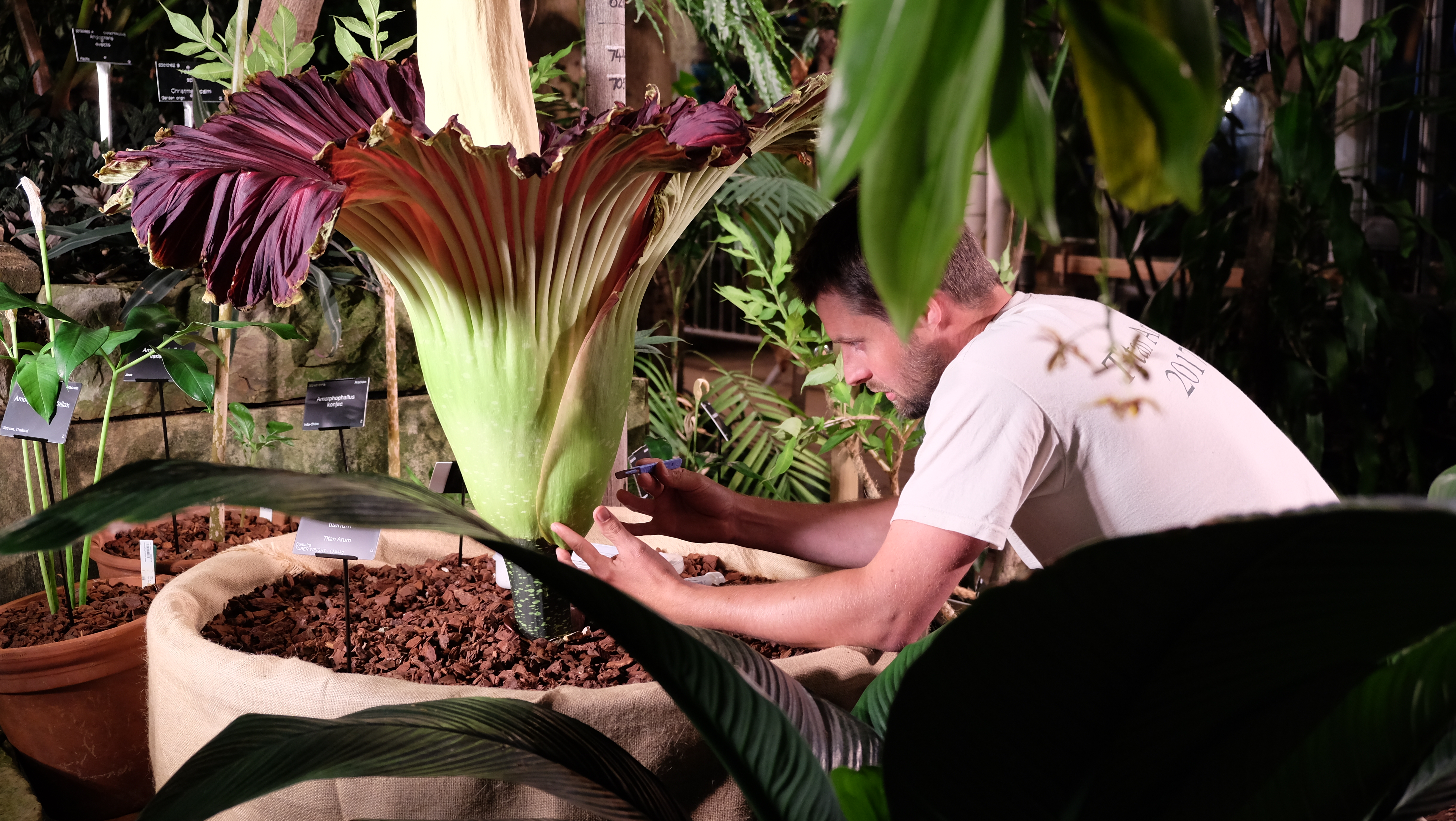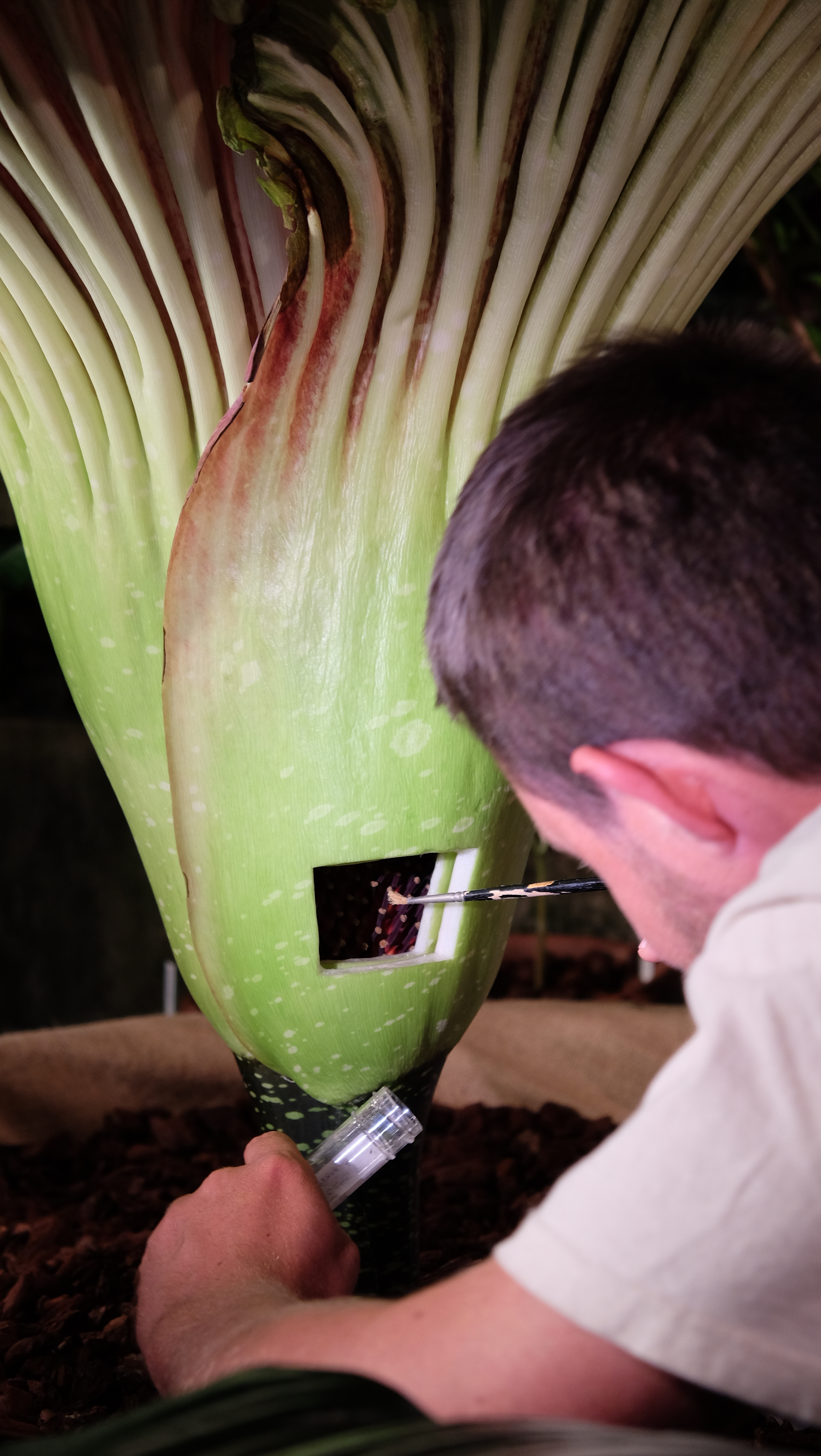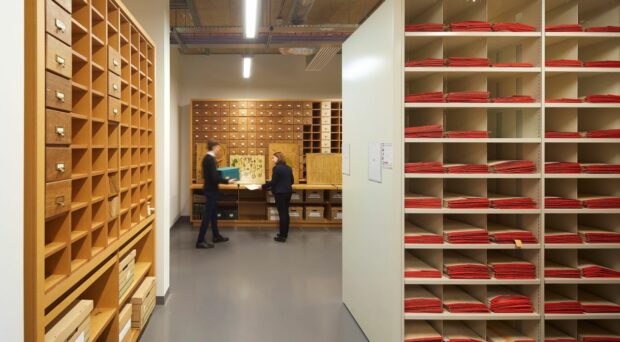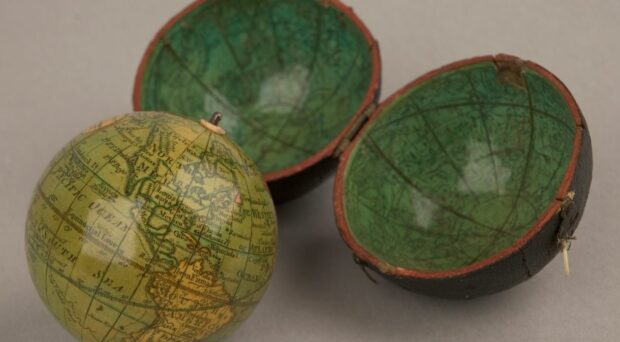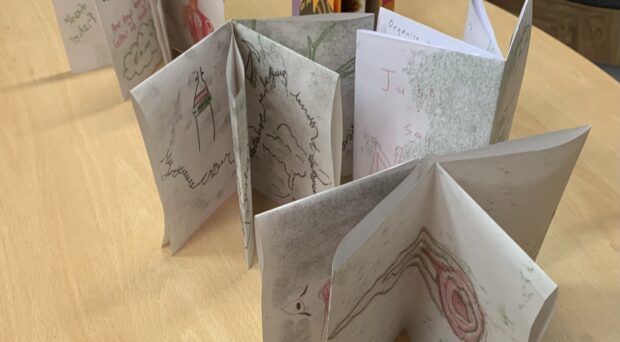We’re proud to present this exclusive interview with one of the Botanic Garden’s celebrities. Titus the titan arum plant’s spectacular flowering was all over the media this summer. We caught up with him as he takes a well-earned break after all the excitement.
Hello Titus. Thank you for agreeing to be interviewed. First, please tell us a little bit more about yourself…
Well, I live in the Glasshouses at the Cambridge University Botanic Garden (CUBG) but I’m not originally from this neck of the woods. I originate from the tropical rainforests of Sumatra in Indonesia where sadly my species is threatened. So, as with many other friends at CUBG, I’m here mainly for conservation, education and research reasons.
You’ve been in the spotlight a lot recently – why’s that?
Well, usually I’m not too exciting to look at – my life cycle means I spend a lot of time in a giant pot of compost, living as a tuber. Most years I throw up a large shoot which becomes a leaf. At least this lets Alex, the Garden’s Glasshouse Supervisor (who kindly waters and feeds me regularly and tends to my needs), know that I’m alive and kicking down there. Really I’m putting on weight, growing and storing energy ready for my spectacular flower which I produce roughly every 7-10 years. This is quite something as it is the largest unbranched flowering structure in the world, not only that, when I flower, I really stink! I mean really badly stink. And that’s why I’ve been in the spotlight recently as this is quite a rare spectacle and it makes me a bit of a Glasshouse diva!




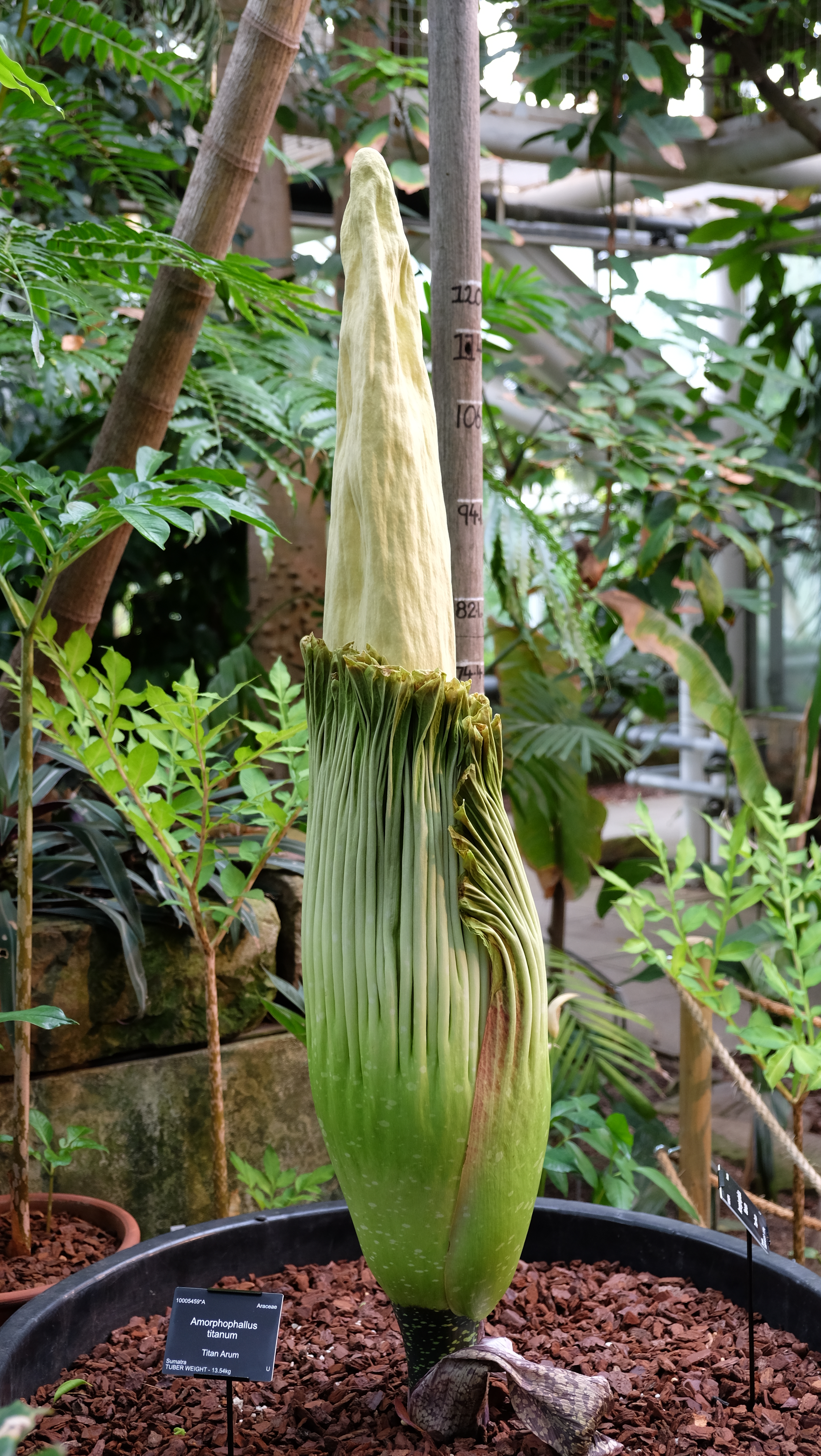

We first met when we livestreamed you on Facebook Live. You had a magnificent and very unusual flower. Can you tell us more about this, and why it makes a very strange smell? What’s that all about?
I must say, my flowering structure is rather grand! And it only lasts for 2-3 days. What you see is an upright, creamy spike called a spadix. Before I open, this is wrapped in a frilly, pale green spathe which is actually a modified leaf that forms a protective chamber around the ‘real’ flowers which are very small and are clustered at the base of my spadix. There are two types of flowers there – female and male. The female flowers mature on the first night, the male on the second night so I can’t fertilise myself with my own pollen. My frilly spathe turns blood red on flowering. My spadix starts to heat up as I generate heat by a process known as thermogenesis and on the first night of flowering, I heat up to pump out a stench of rotting carrion. In the wild, this attracts carrion beetles which I lure to the cluster of flowers at my base to pollinate my female flowers and take pollen away from the male ones. That’s why I really whiff and also why I’m often referred to as the corpse flower. The Titan Army at the Garden ran a ‘smellexit’ poll and my visiting fans thought I smelt of many things, none of which were at all flattering – I think my favourite one was scout camp socks! There were lots of very funny suggestions.
On the two nights you were open, we gather that you also became a bit of a TV celebrity. What’s it like to live under all the attention?
Well spending so much time as a tuber living in compost I’m quite camera shy but I soon had to overcome that and I was chuffed to bits that the local TV and radio spent so much time reporting on my progress – and smell! The Garden’s Titan Army made sure they kept a close eye on me – or should I say spy on me. They set up a timelapse camera to record my growth and flowering and they put up a webcam so that my progress was beamed over the web – I quite enjoyed the attention! It takes a lot of energy and effort to flower and there’s a lot of watching, waiting, measuring and assessing when it might be. I eventually decided I had enough energy to bloom, so on Monday 26 June in the late afternoon I opened up. Having stood still for some time, opening is relatively fast, so I loved seeing the timelapse of me opening and yes, I became quite a local celebrity. The footage was beamed across the local ITV and BBC TV news and we had Heart FM and BBC Radio Cambridgeshire talking about me too on their drive times.
Also on the night I flowered, I was honoured that BBC Gardeners’ World came to film people coming to look at and smell me. Then at midnight, once our visitors had disappeared, they filmed Alex pollinating my female flowers using his paintbrush. He was very excited to have both frozen pollen from Royal Botanic Garden Edinburgh and fresh pollen couriered up from the Eden Project in Cornwall.
With so much pollen he’s hopeful of pollination success and I understand that the programme showing all this was aired in July and Monty Don and his team were as pleased as punch with the whole thing, which was a big relief! I also had a visit from Peter Gibbs, the Chair of Gardeners’ Question Time on BBC Radio 4. He was busy finding out more about the more pleasant scents in our Scented Garden but felt he had to come and get a whiff of me while he was here – that sent him off packing!
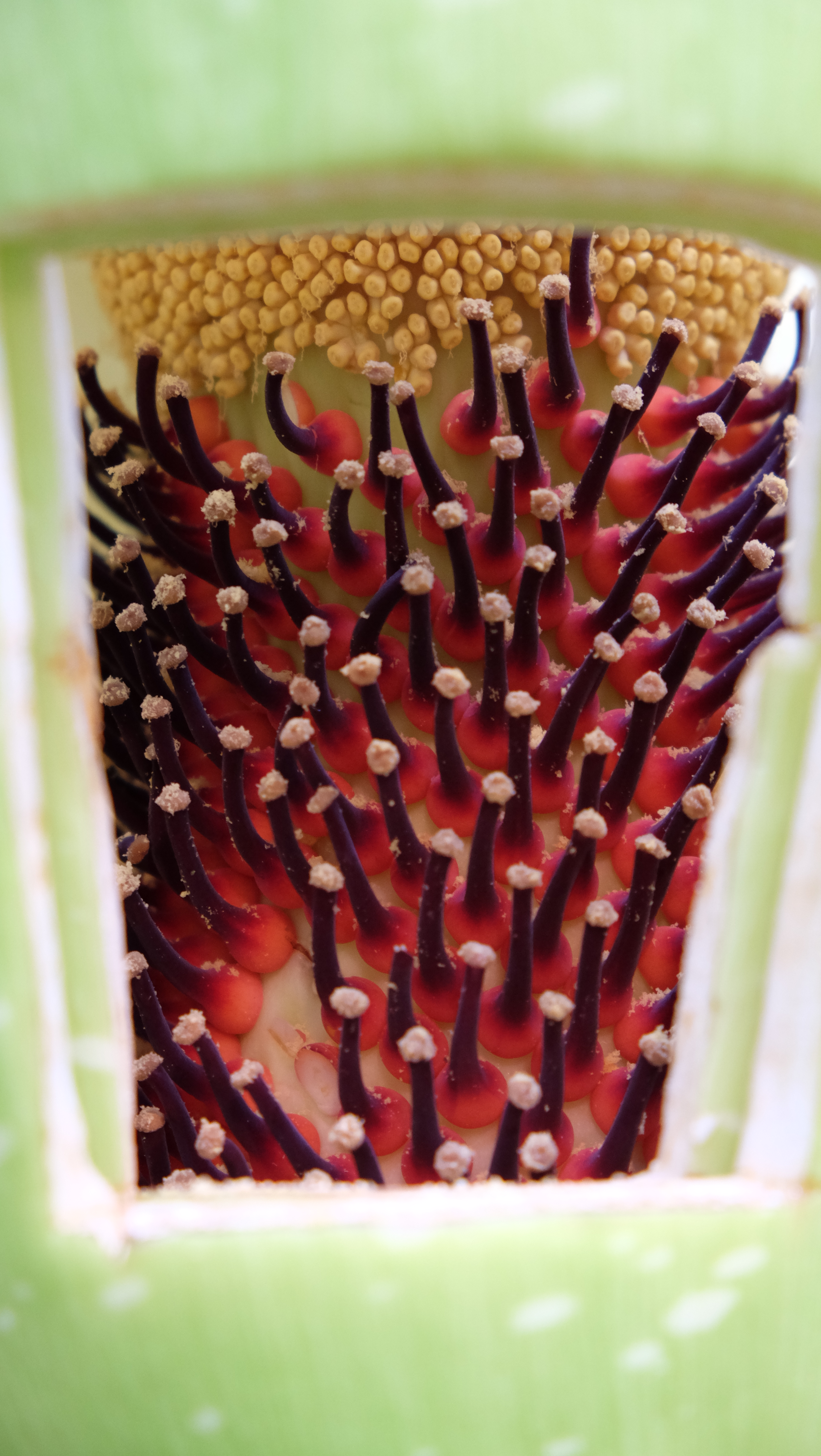
Why all the interest? What makes you so special?
Well I’m considered a tropical giant and in the wild there’s a limited natural distribution of fellow titan arums. They are actually categorized as a vulnerable species by the International Union for the Conservation of Nature (IUCN) mainly because of deforestation and habitat degradation. Botanic Gardens such as the one I live in care for rare plants like me and that is why they opened up late for visitors when I flowered, so they could share the spectacle of my flower and smell and get as many people as possible excited about me and the wonders of plants. It is not all about me, honest!
Are there any other titan arums in the Garden?
Yes, there’s my sister plant ‘Tiny’, which flowered in 2015. I last flowered in 2004. Now that we’ve both flowered, we’ll spend the next few years recovering so don’t expect anything big from either of us for a while!
Where did the pollen come from that was used to pollinate you?
When Alex knew I was about to flower, he put out a call to other botanic gardens and Royal Botanic Garden Edinburgh sent some frozen pollen on dry ice (all very dramatic!) and the Eden Project sent some fresh pollen. Alex also had his own supply of frozen pollen he collected from ‘Tiny’, so I was very lucky to have lots of options for pollination.
Did your pollen travel places too?
It certainly did! Once my male flowers flowered on the second night of opening. Alex collected this pollen and sent some back to Edinburgh where their Titan Arum ‘New Reekie’ was about to flower. Pollen was also sent to Paignton Zoo and a botanic garden in Bonn, Germany. I think it’s very exciting to help each other out in this way and hopefully we can play our part in producing a new generation of titans. We froze the rest of my pollen in SLCU ready for another flower here at the Garden from Tiny or to send to other titan arums around the world.
And we hear you may be expecting. Can you tell us more?
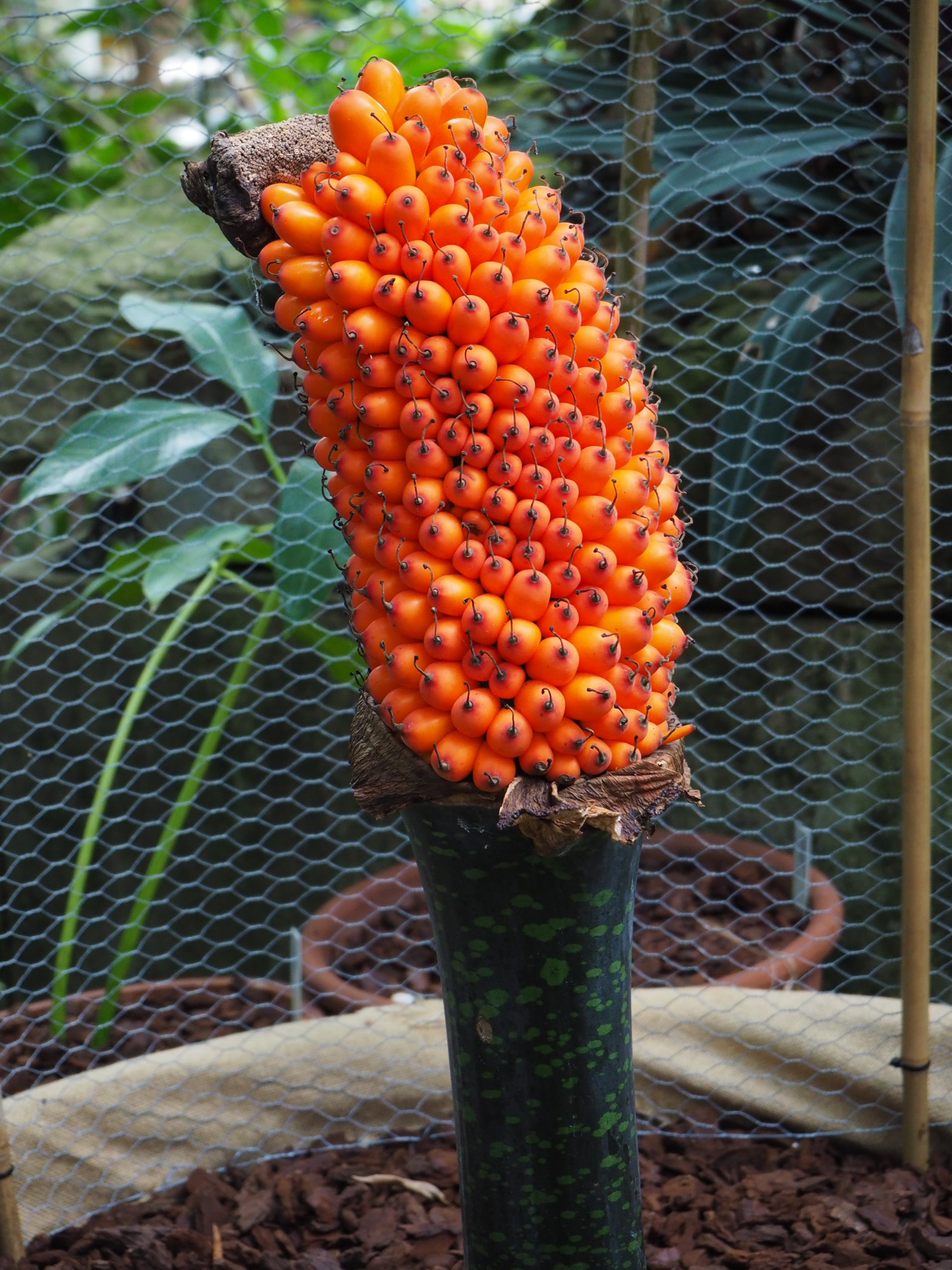
We’re all getting very excited. My fruits are swelling nicely and Alex hopes he will be collecting seed for sowing in the autumn. So watch this space! This is potentially fantastic news as it’s very rare to set fruit in cultivation so if Alex is successful we will together be playing an important role in conserving the titan arum.
Does this mean that the Garden staff might be looking forward to more baby titans?
There is a chance yes. If successful, we will know for sure, once the fruits are ripe and sown. This will be very soon now and we hope to see the first babies popping their heads above the surface by early 2018.
What are your hopes for titan arum plants in the future?
We hope that the new generation of titan arums can be grown on and provide further interest and excitement for generations of visitors to come. We will share plants with other botanic gardens such as Oxford University Botanic Garden so that more people can experience the wonder, and the bad smell! It will also add to the population of plants in botanic gardens which provide a back-up for study and conservation.
Is there anything else you would like to share with us?
Well I am quite weary as it takes a lot of energy to send out such a huge bloom and try to make babies but I’d like to take this opportunity to thank all the visiting public and my admirers for queuing to see me when I was at my most magnificent. I still can’t believe I had over 6,000 fans who came to see and smell me, even in the rain, so a heartfelt thank you for their interest and for supporting the work of the Botanic Garden.
Thanks, Titus!
Can’t get enough titan arum?
- Find out more about Titus’ botany in CUBG’s short video.
- Watch Titus, Alex and the Titan Army in action in a clip from the BBC Gardeners’ World episode.
- Check out the University of Cambridge Museums’ livestream from the Glasshouse.


